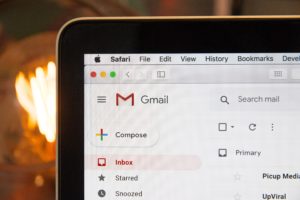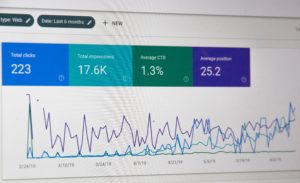Effective email campaigns are a cornerstone of any advocacy campaign and an organization’s digital efforts. Despite the rise in social media advocacy campaigns, email is still an extremely powerful tool, and four out of five marketers say they’d rather give up social media than email marketing, according to Hubspot.
Emails can easily be personalized and targeted to specific audience segments, and 74 percent of Baby Boomers say email is the most personal way to receive communication from brands. Email campaigns are also a cost-effective way to send mass communications while maintaining flexibility with content (length, images, links) and send times.
Creating a successful email campaign strategy is essential for advocacy, so here’s what you need to keep in mind when planning advocacy email sends:
FiscalNote’s 2021 Advocacy Benchmark Report

When is the Right Time to Send Emails?
The best (and worst) time to send an email can vary based on industry. Therefore, advocacy organizations should first factor in their own data on email open and action rates. But finding data from your industry can also be invaluable as you formulate a strategy for send times. Stay aware of seasonal trends within your industry and plan accordingly.
 Identifying the best day/time combination for your advocacy campaigns to get the most engagement from supporters is more of an art than a science. However, we want to make it a bit easier for you to find those pockets of opportunity where advocates are more tuned in and willing to take action.
Identifying the best day/time combination for your advocacy campaigns to get the most engagement from supporters is more of an art than a science. However, we want to make it a bit easier for you to find those pockets of opportunity where advocates are more tuned in and willing to take action.
That’s why we leveraged the data from the more than 23,000 advocacy campaigns from our clients to build our Best Day/Time Matrix for Advocacy Email Campaigns. We combined the open and action rates per day and per hour to identify the day/time combinations where our advocacy clients found the most engagement. Use this matrix and quickly find what time and day combination could yield the best engagement from your audience and start testing!
While a lot depends on your audience’s demographics, most FiscalNote advocacy clients sent email campaigns between 8 a.m. and 5 p.m., which follows the same trend since 2016. And that has seemed to work since they saw very high open and action rates overall in 2020.
According to our 2021 Advocacy Benchmark Report, in 2020 the biggest surge in activity was between 10 a.m. and 4 p.m. The best time to send an email can depend on what type of content you’re sending out:
- The best action rate for call-to-action campaigns happened at 10 a.m.
- For informational emails, the best open rate was at 4 p.m.
- FiscalNote advocacy clients saw the most engagement overall on Saturdays at 4 p.m.
The research found that the best time to send an email is at 10 a.m., while 6 a.m. can be a good time to catch people checking their emails before they start their day. On the other hand, 8 p.m. email sends can reach those checking their emails as they wind down for the day, and late afternoon sends can reach people checking their email during work and looking for a distraction. Knowing your industry is essential to be aware of which of these might best apply to your audience.
To find out which time and day combination could yield the best engagement from your audience, download FiscalNote’s full report to see how your campaigns fare against the industry.
Find the best day/time combo for your advocacy email campaigns.
What’s the Best Day to Send Emails?
Choosing the right day of the week to send your advocacy email campaign is crucial in making sure you maximize their effectiveness and get the most bang for your buck. You want to make sure you email people at a time they are not only willing to open your message but are also available to take action on your request.
Just like time of day, the day of the week you send your emails will vary based on industry. However, our 2021 Advocacy Benchmark Report found that Saturday is the best day to send advocacy emails, with the highest open rates and action rates occurring during the weekend. Friday afternoons and evenings were another strong time for the advocacy industry.
How to Analyze Your Data to Determine Best Email Practices
 Despite what research and benchmark reports tell you, it’s important to experiment and get to know your audience to understand the best time to send an advocacy email. Find the right data within your organization’s database to make the best decision for your audience. Even more than industry or market research data, your own data should guide your email strategy. To determine best email practices for your organization, factor in the following:
Despite what research and benchmark reports tell you, it’s important to experiment and get to know your audience to understand the best time to send an advocacy email. Find the right data within your organization’s database to make the best decision for your audience. Even more than industry or market research data, your own data should guide your email strategy. To determine best email practices for your organization, factor in the following:
1. Pinpoint your data
Gather existing data from your email service or Google Analytics. If pinpointing data is a challenge, consider employing a digital advocacy solution that makes it easier to track these important metrics and enables you to effortlessly build a successful strategy and an advocacy report.
2. Group your types of content
It’s important to segment types of campaigns and types of email content before reviewing the data, as the data may show different trends.
3. Consider seasonality
In addition to segmenting the different types of emails and content, factor in any seasonality you’re aware of (or find in your data) and segment that as well before analyzing open rates and conversion rates.
4. Analyze open rates and CTR’s
Review old email campaigns and the ones that performed well, noting the days and times emails had the highest click-through rates and action rates.
5. Analyze unsubscribe rates
Unsubscribe rate data should also be factored into your analysis because if a particular time shows high open rates but higher unsubscribe rates, you may find it’s not worth sending at that time.
 6. Competitor analysis
6. Competitor analysis
One way to compare your action plan to competitors’ is by subscribing to their emails and tracking the dates and times they send emails. Make note of any patterns you find and use this information to your advantage.
7. A/B test email campaigns
If you’ve narrowed your research down to several days and times that could work best for you, A/B test the same content to similar audiences at different dates and times to help you determine which is best for your audience.
Summary
Ultimately, your expert advocacy strategy will take some trial and error as you learn about your audience and what works for them. Using these industry benchmarks as a guideline, you can start experimenting with times and days to send advocacy emails until you find the optimal times. As you experiment and test, keep the following in mind:
- In 2020 the biggest surge in activity was between 10 a.m. and 4 p.m., which means the most competition for your audience’s attention.
- The best action rate for advocacy call-to-action campaigns happens at 10 a.m.
- For informational advocacy emails, the best open rate was at 4 p.m.
- FiscalNote advocacy clients saw the most engagement overall on Saturdays at 4 p.m.
Get Specific, Actionable Data & Insights With VoterVoice
Advocacy success is largely dependent on using the right technology tools. FiscalNote’s flagship advocacy solution, VoterVoice, empowers organizations of all sizes to quickly adapt and execute innovative advocacy strategies, with grassroots and grasstops tools designed to educate, engage, and grow your advocacy base.
VoterVoice Insights lets you measure and improve your email campaign results, analyzing the effectiveness of each campaign and easily sharing reports to showcase your impact. Monitor advocate engagement with real-time intelligence that alerts you to low open and action rates, and clearly understand your performance with sleek visualizations of results.
Ready to see for yourself?
See how our 360-degree approach to managing advocacy and policy issues can help you promote action, manage risk, as well as assess your impact and drive results.


